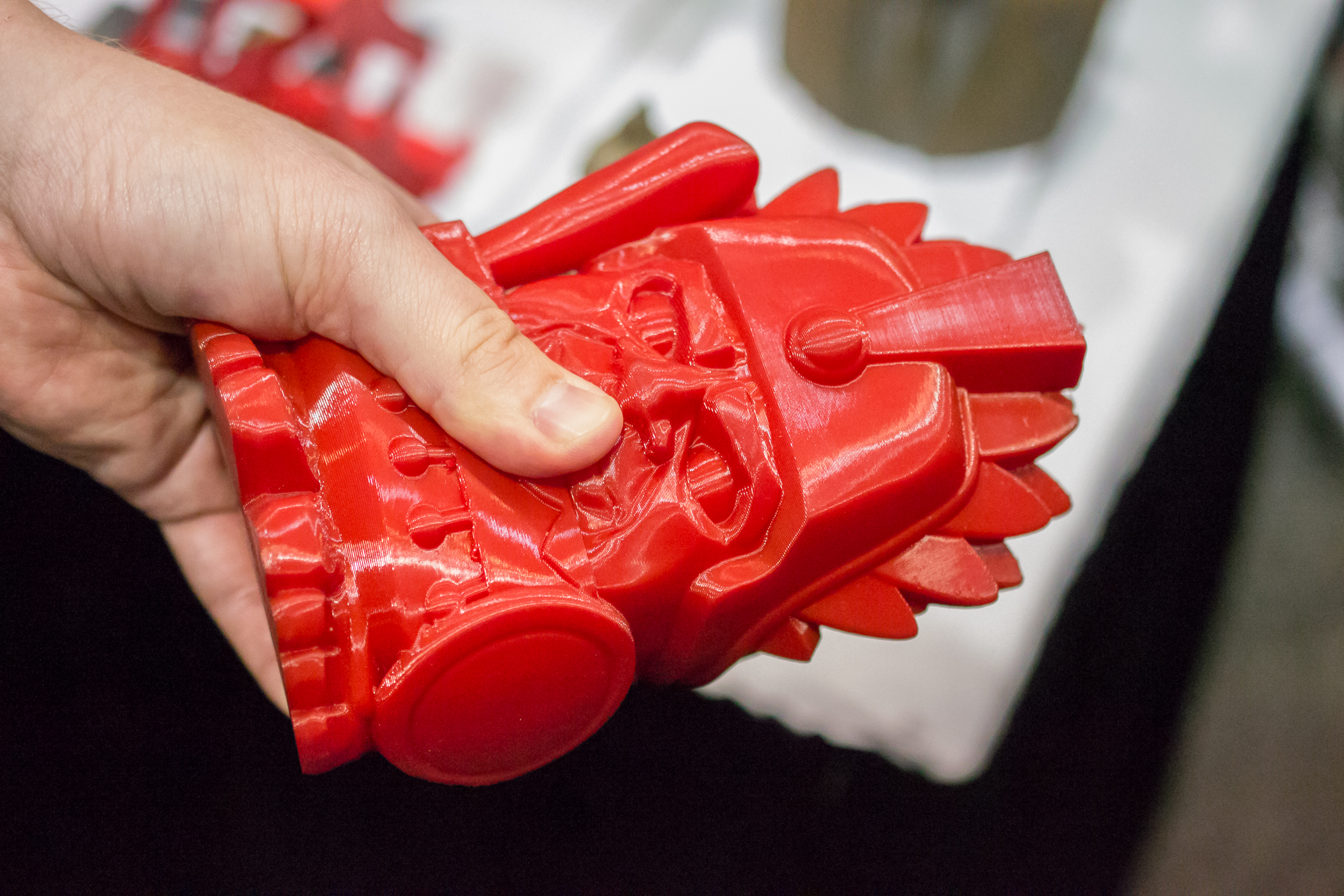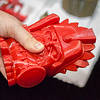Hi Captain,
I have a Zortrax M200, Ultimaker 2, AIrWolf 3DHD, Form 1+ and a Cube 3.
I had a Makerbot Replicator 5th gen but I had to return it, what a P.O.S. however I heard they had fixed many of the issues now.
I have to honestly say that my go to printer is the Zortrax M200.
The Zortrax M200 gives me the finest prints with the least effort.
I just turn it on and print.
It really is an amazing printer.
I never have any issues, I have printed well over a 100 parts without a failed part or even leveling the table.
As I say, I am a Maker and Not a Tinkerer.
I just want to print and not tinker with settings for hours on end, leveling tables or trying to improve hardware, nozzles, etc.
The Zortrax M200 without fail will give you the best prints with the least effort.
Keep in mine that the Zortrax M200 is a closed system and only prints in proprietary filaments which currently are Z-ABS, Z-ULTRAT (a stronger ABS), Z-HIPS, Z-GLASS, Z-PETG and Z-PCABS and also uses it’s own slicer Z-SUITE.
The close system does not brother me as I am seeking the best results and if that means buying their filament and using their software so be it. I am more than happy with the Zortrax System.
One more word, Zortrax will void your warranty if you do not use their materials, so Ninja Flex is kind of out for a Zortrax M200.
I have printed with Ninja Flex on my Ultimaker 2 and I guess I’m the only one who will say this but the Ninja Flex always came out crappy to say the least, almost impossible to remove any supports. You say you want a plug and play machine but then you want to to use exotic materials that most people have trouble printing with. Ninja Flex is one of those materials that you will have to spend time and effort making many numerous adjustment to get it to print correctly. Some people actually change the hot ends or even their extruder driver from a bowden to a direct drive system in order to print flexible materials. I would suggest if you are getting a printer for just flexible materials that you get a direct drive system as some have said it is a more reliable way to flex materials.
My second choice is my Ultimaker 2 which is also a great machine for materials that the Zortrax M200 cannot print such as PLA, Flex, Nylon, Wood, Bronze, etc. but the Ultimaker 2 is no match for the Zortrax M200 if you are printing in any of the materials that the Zortrax can print in. I have printed flex materials with my Ultimaker 2 without great results but than again I did not spend hours of time trying to tinker with the slicer settings such as temperature of the extruder, the bed, the speed, the raft, the supports, etc. I think if you want to spend time tweaking then the Ultimaker 2 will probably give some decent results with flex filaments.
The Ultimaker 2 and the Zortrax are both very reliable printers never having a issue with either.
I think if you are a maker with a venue of many different parts and materials then perhaps you need both machines.
I only use the Form 1+ is for very small delicate parts as I do not like resin, the mess it makes, the cleanup and feeling of the finished project for larger parts. I would think the Form 1+ would be good for perhaps casting or such.
The Form 1+ is very expensive to keep up with as the the trays, resins, etc. are all very expensive. The trays wear out and have to be replaced. But if you need a resin part or a part that is can’t be printed on other machines due to it’s small size then the Form 1 - actually they now sell the Form 2, might be the way to go.
The bottom line is I sincerely believe that you can’t go wrong with a Zortrax M200, it is an excellent machine for the price.
I have the new Zortrax Inventure on pre-order.
The Zortrax Inventure uses a support filament along with Z-ULTRAT PLUS. They give you a small tank the dissolves the support filament in water after printing. This was something I have tried in the past but the usual support filaments are difficult to print with to to say the least so I am hoping that Zortrax has finally tackled the issues that have plagued the past. I am sure it will be a huge improvement over the previous dual extruder support processes that are currently being use.
And a word on the Cube 3. The Cube 3 has taken some undeserved bad raps from people but it actually is a great plug and play printer that prints better than the Ultimaker 2 and sometimes better than the Zortrax M200. It prints in 0.070 resolution and the models/parts come out stunning.
However the printer is super loud and slow, the filament is not as cost effective as the Zortrax and Ultimaker 2 and you can expect an occasional jam, but I would recommend the Cube 3 to the very budget minded person who wants to get started in 3D printing for under a $1000.
I still use my Cube 3D when I need a nice model for my personal collection.
I hope I have shed some light on my own personal experiences from the printers that I actually own and work with.
Making a 3D printer buying discussion is never easy but think about how much you want to spend, how often are you using this printer (are you just printing for your self?), what is it you are trying to print and with what materials (are you going to want to print in ABS, HIPS, T-GLASS, PETG or are you also going to want to print in PLA, FLEX, Wood Fill, Bronze Fill, etc.?).
Cheers,
Peter

